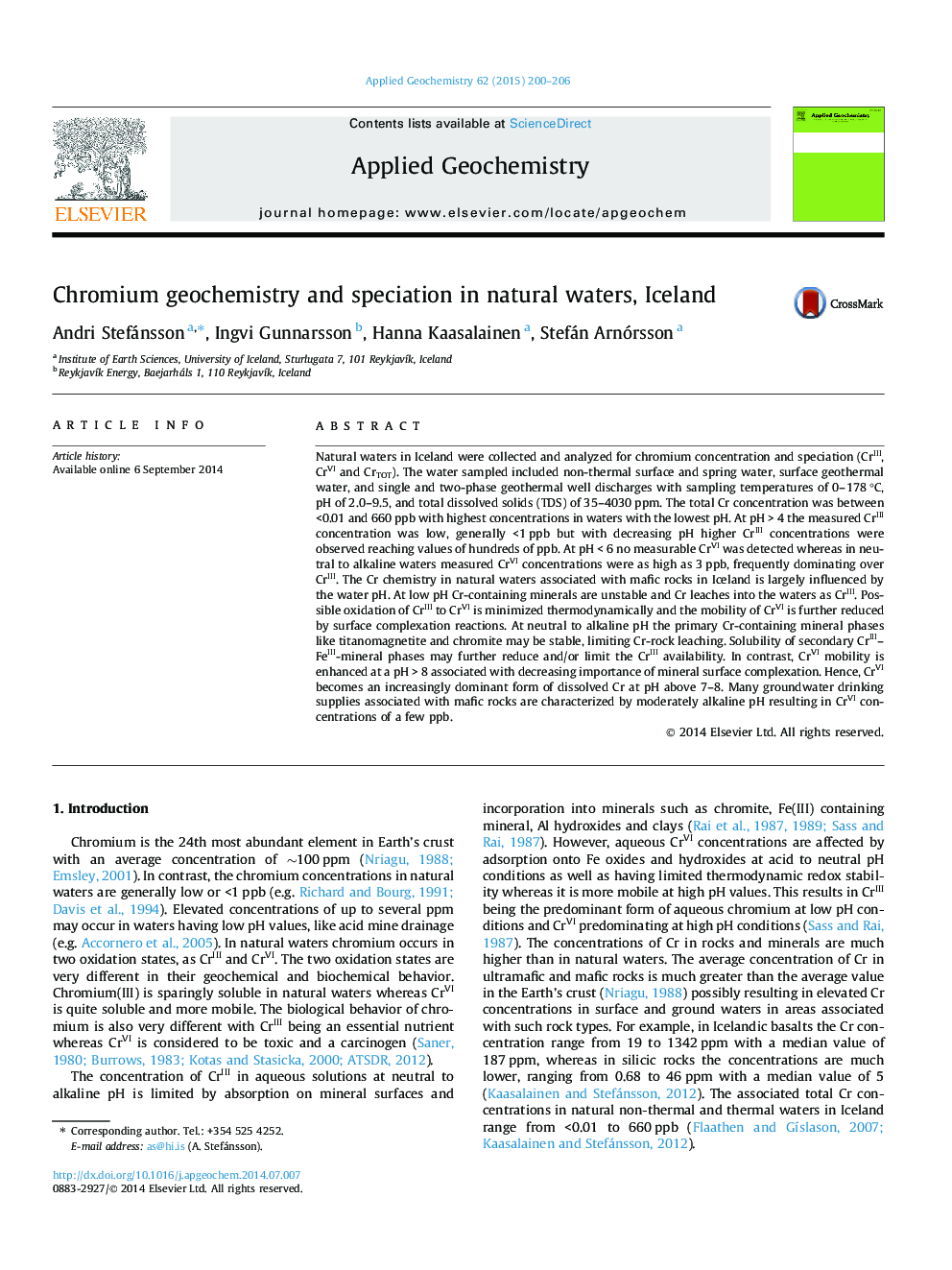| Article ID | Journal | Published Year | Pages | File Type |
|---|---|---|---|---|
| 4435627 | Applied Geochemistry | 2015 | 7 Pages |
Natural waters in Iceland were collected and analyzed for chromium concentration and speciation (CrIII, CrVI and CrTOT). The water sampled included non-thermal surface and spring water, surface geothermal water, and single and two-phase geothermal well discharges with sampling temperatures of 0–178 °C, pH of 2.0–9.5, and total dissolved solids (TDS) of 35–4030 ppm. The total Cr concentration was between <0.01 and 660 ppb with highest concentrations in waters with the lowest pH. At pH > 4 the measured CrIII concentration was low, generally <1 ppb but with decreasing pH higher CrIII concentrations were observed reaching values of hundreds of ppb. At pH < 6 no measurable CrVI was detected whereas in neutral to alkaline waters measured CrVI concentrations were as high as 3 ppb, frequently dominating over CrIII. The Cr chemistry in natural waters associated with mafic rocks in Iceland is largely influenced by the water pH. At low pH Cr-containing minerals are unstable and Cr leaches into the waters as CrIII. Possible oxidation of CrIII to CrVI is minimized thermodynamically and the mobility of CrVI is further reduced by surface complexation reactions. At neutral to alkaline pH the primary Cr-containing mineral phases like titanomagnetite and chromite may be stable, limiting Cr-rock leaching. Solubility of secondary CrIII–FeIII-mineral phases may further reduce and/or limit the CrIII availability. In contrast, CrVI mobility is enhanced at a pH > 8 associated with decreasing importance of mineral surface complexation. Hence, CrVI becomes an increasingly dominant form of dissolved Cr at pH above 7–8. Many groundwater drinking supplies associated with mafic rocks are characterized by moderately alkaline pH resulting in CrVI concentrations of a few ppb.
